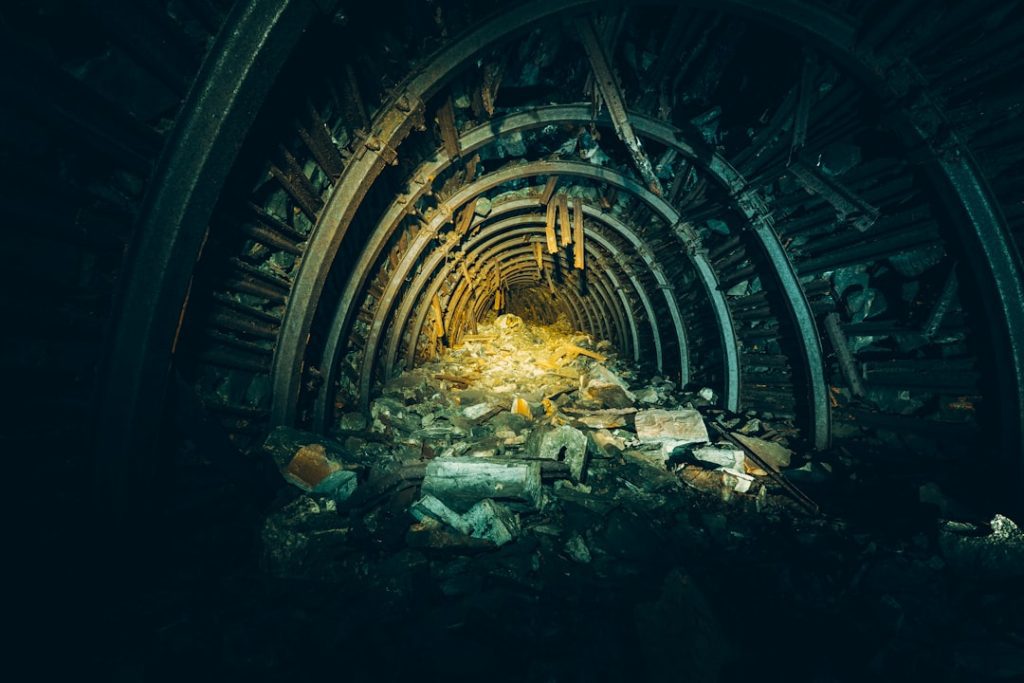Afghanistan is a country rich in natural resources, and among its most significant assets are its coal reserves. These reserves are primarily located in the northern and central regions of the country, with notable deposits found in provinces such as Samangan, Baghlan, and Takhar. Estimates suggest that Afghanistan possesses around 1.5 billion tons of coal, making it a potentially lucrative resource for both domestic energy production and export.
The coal found in Afghanistan is primarily bituminous, which is suitable for various applications, including electricity generation and industrial processes. As the country seeks to rebuild its economy and improve energy access for its population, tapping into these coal reserves presents both challenges and opportunities. The significance of coal in Afghanistan’s energy landscape cannot be overstated.
With a population of over 38 million people, the demand for energy is ever-increasing, yet the country has struggled with inadequate infrastructure and limited access to electricity. Coal could play a pivotal role in addressing these energy shortages, providing a reliable source of power that can be harnessed to fuel economic growth. Furthermore, the development of the coal industry could create jobs and stimulate local economies, offering a pathway toward greater self-sufficiency.
However, the path to fully realizing the potential of Afghanistan’s coal reserves is fraught with obstacles, including political instability, outdated mining practices, and environmental concerns that must be carefully navigated.
Key Takeaways
- Afghanistan has significant coal reserves, estimated at over 1.5 billion tons, with potential for further exploration and development.
- Coal production in Afghanistan dates back to the early 20th century, with Soviet assistance leading to increased production in the 1960s and 1970s.
- Challenges in coal mining in Afghanistan include security concerns, lack of infrastructure, and limited technical expertise, but there are also opportunities for growth and development in the industry.
- The environmental and social impacts of coal production in Afghanistan include air and water pollution, displacement of communities, and health hazards for workers.
- Government policies and regulations on coal mining in Afghanistan aim to promote sustainable and responsible mining practices, while also attracting foreign investment to the industry.
History of Coal Production in Afghanistan
The history of coal production in Afghanistan dates back several centuries, with evidence suggesting that coal was used as a fuel source even before the modern era. However, it was not until the late 19th and early 20th centuries that coal mining began to take on a more organized form. During this period, foreign interests, particularly from British and Russian entities, sought to exploit Afghanistan’s mineral wealth, including its coal deposits.
The establishment of railways and other infrastructure during this time facilitated the transportation of coal to various markets, although production levels remained relatively low due to ongoing conflicts and political instability. In the latter half of the 20th century, particularly during the Soviet invasion in the 1980s, coal production faced significant disruptions. The war led to a decline in mining activities as many facilities were damaged or abandoned.
Following the Soviet withdrawal and the subsequent civil war, Afghanistan’s coal industry remained largely underdeveloped. It wasn’t until the early 2000s, after the fall of the Taliban regime, that efforts were made to revitalize the sector. International organizations and foreign governments began to invest in Afghanistan’s mining infrastructure, recognizing the potential of coal as a key resource for energy generation and economic development.
Despite these efforts, progress has been slow due to ongoing security concerns and governance challenges.
Challenges and Opportunities in Coal Mining

The coal mining sector in Afghanistan faces numerous challenges that hinder its growth and development. One of the most pressing issues is the lack of adequate infrastructure. Many of the existing mines are located in remote areas with limited access to transportation networks, making it difficult to transport coal to markets or power plants.
Additionally, outdated mining techniques and equipment contribute to inefficiencies in production and safety hazards for workers. The absence of a skilled workforce further complicates matters, as many local miners lack training in modern mining practices and safety protocols. Despite these challenges, there are significant opportunities for growth within Afghanistan’s coal industry.
The increasing demand for energy presents a unique chance for coal to become a cornerstone of the country’s energy strategy. By investing in modern mining technologies and infrastructure improvements, Afghanistan could enhance its coal production capabilities and increase efficiency. Furthermore, partnerships with foreign investors could bring much-needed capital and expertise to the sector, facilitating the development of new mines and expanding existing operations.
If managed effectively, these opportunities could lead to job creation, economic growth, and improved energy access for millions of Afghans.
Environmental and Social Impacts of Coal Production
The environmental impacts of coal production in Afghanistan are a critical concern that must be addressed as the industry develops. Coal mining can lead to deforestation, soil erosion, and water pollution if not conducted responsibly. The extraction process often disrupts local ecosystems and can result in the contamination of nearby water sources with heavy metals and other pollutants.
Additionally, the burning of coal for energy generation contributes to air pollution, which poses health risks to local communities. As Afghanistan seeks to harness its coal reserves for economic development, it is essential to implement sustainable mining practices that minimize environmental degradation. Socially, coal production can have both positive and negative effects on local communities.
On one hand, increased mining activities can create job opportunities and stimulate local economies. Many rural areas in Afghanistan suffer from high unemployment rates, and coal mining could provide much-needed livelihoods for families. On the other hand, there are concerns about the displacement of communities due to mining operations and the potential for conflicts over land use.
Moreover, without proper regulations and oversight, workers may face unsafe working conditions and inadequate compensation. Balancing economic benefits with social responsibility will be crucial as Afghanistan navigates its coal production landscape.
Government Policies and Regulations on Coal Mining
The Afghan government has recognized the importance of developing its mineral resources, including coal, as part of its broader economic strategy. In recent years, various policies have been introduced aimed at promoting investment in the mining sector while ensuring environmental protection and social responsibility. The Ministry of Mines and Petroleum has been tasked with overseeing mining activities and implementing regulations that govern exploration, extraction, and environmental management.
However, enforcement of these regulations has often been inconsistent due to limited resources and ongoing security challenges. To attract foreign investment into the coal sector, the Afghan government has also sought to create a more favorable business environment by streamlining licensing processes and offering incentives for companies willing to invest in infrastructure development. Despite these efforts, challenges remain in terms of transparency and governance within the sector.
Corruption has been a persistent issue in Afghanistan’s mining industry, undermining efforts to establish a fair regulatory framework. Strengthening governance structures and ensuring accountability will be essential for fostering a sustainable coal industry that benefits both investors and local communities.
Foreign Investment in Afghanistan’s Coal Industry

Foreign investment plays a crucial role in unlocking Afghanistan’s coal potential. Given the country’s limited financial resources and technical expertise, attracting international investors is vital for modernizing mining operations and developing infrastructure necessary for efficient coal production. Several foreign companies have expressed interest in Afghanistan’s coal sector due to its untapped reserves and strategic location within South Asia.
These investments can bring advanced technologies and best practices that enhance productivity while also providing training opportunities for local workers. However, foreign investment in Afghanistan’s coal industry is not without its challenges. Political instability remains a significant deterrent for potential investors who may be wary of security risks associated with operating in conflict-affected regions.
Additionally, concerns about governance issues and corruption can complicate investment negotiations. To mitigate these risks, it is essential for the Afghan government to establish clear policies that promote transparency and protect investor interests while ensuring that local communities benefit from resource extraction activities. By creating a stable investment climate, Afghanistan can attract much-needed capital to develop its coal resources sustainably.
Future Prospects for Coal Production in Afghanistan
The future prospects for coal production in Afghanistan are intertwined with broader trends in energy consumption and global market dynamics. As countries around the world increasingly focus on transitioning to renewable energy sources to combat climate change, the demand for coal may face challenges in international markets. However, within Afghanistan itself, coal remains a vital resource for meeting domestic energy needs.
The government’s commitment to expanding electricity access means that coal could play an essential role in powering homes and industries across the country. Moreover, advancements in clean coal technologies present an opportunity for Afghanistan to develop its coal resources more sustainably. By investing in technologies that reduce emissions from coal combustion or improve efficiency in extraction processes, Afghanistan can position itself as a responsible player in the global energy market while still leveraging its abundant resources.
Additionally, regional cooperation with neighboring countries could facilitate cross-border trade in coal, further enhancing economic prospects for Afghanistan’s mining sector. Ultimately, with strategic planning and investment, Afghanistan’s coal industry has the potential to contribute significantly to national development goals.
The Role of Coal in Afghanistan’s Energy Sector
In conclusion, coal holds a pivotal position within Afghanistan’s energy sector as the country grapples with pressing energy shortages and seeks pathways toward economic recovery. With substantial reserves located throughout various provinces, there exists an opportunity for coal to serve as a reliable source of power generation that can support industrial growth while improving access to electricity for millions of Afghans. However, realizing this potential requires addressing significant challenges related to infrastructure development, environmental sustainability, governance issues, and attracting foreign investment.
As Afghanistan moves forward with its plans for economic revitalization post-conflict, it must prioritize responsible management of its natural resources while ensuring that local communities benefit from resource extraction activities. By fostering an environment conducive to sustainable mining practices and transparent governance structures, Afghanistan can harness its coal reserves not only as an energy source but also as a catalyst for broader socio-economic development. The journey ahead will undoubtedly be complex; however, with careful planning and collaboration among stakeholders at all levels, coal can play an integral role in shaping a more prosperous future for Afghanistan.
For those interested in the broader implications and potential advancements in coal technology, particularly in regions like Afghanistan, an insightful article worth reading discusses the process and benefits of coal liquefaction. This technology could significantly impact Afghanistan’s coal production by providing an alternative method to utilize this abundant natural resource more efficiently and cleanly. You can explore the detailed insights and implications of this technology by visiting Unlocking the Potential of Coal Liquefaction. This article offers a comprehensive look at how coal liquefaction could transform coal into a more versatile and environmentally friendly energy source.
FAQs
What is the current status of coal production in Afghanistan?
As of now, coal production in Afghanistan is at a relatively low level compared to other countries. However, there are efforts to increase production and develop the coal mining industry in the country.
What are the potential reserves of coal in Afghanistan?
Afghanistan is estimated to have significant coal reserves, with some reports suggesting that the country may have as much as 1.5 billion tons of coal deposits.
What are the challenges facing coal production in Afghanistan?
Challenges facing coal production in Afghanistan include security concerns, lack of infrastructure, and limited investment in the coal mining sector. Additionally, environmental and social considerations also need to be addressed.
What are the potential uses of coal in Afghanistan?
Coal in Afghanistan has the potential to be used for power generation, industrial processes, and heating. It could also contribute to the country’s energy security and reduce reliance on imported energy sources.
What are the government’s plans for developing the coal mining industry in Afghanistan?
The Afghan government has expressed interest in developing the coal mining industry as part of its efforts to diversify the country’s economy and reduce dependence on foreign aid. Plans include attracting investment, improving infrastructure, and implementing regulatory reforms.



